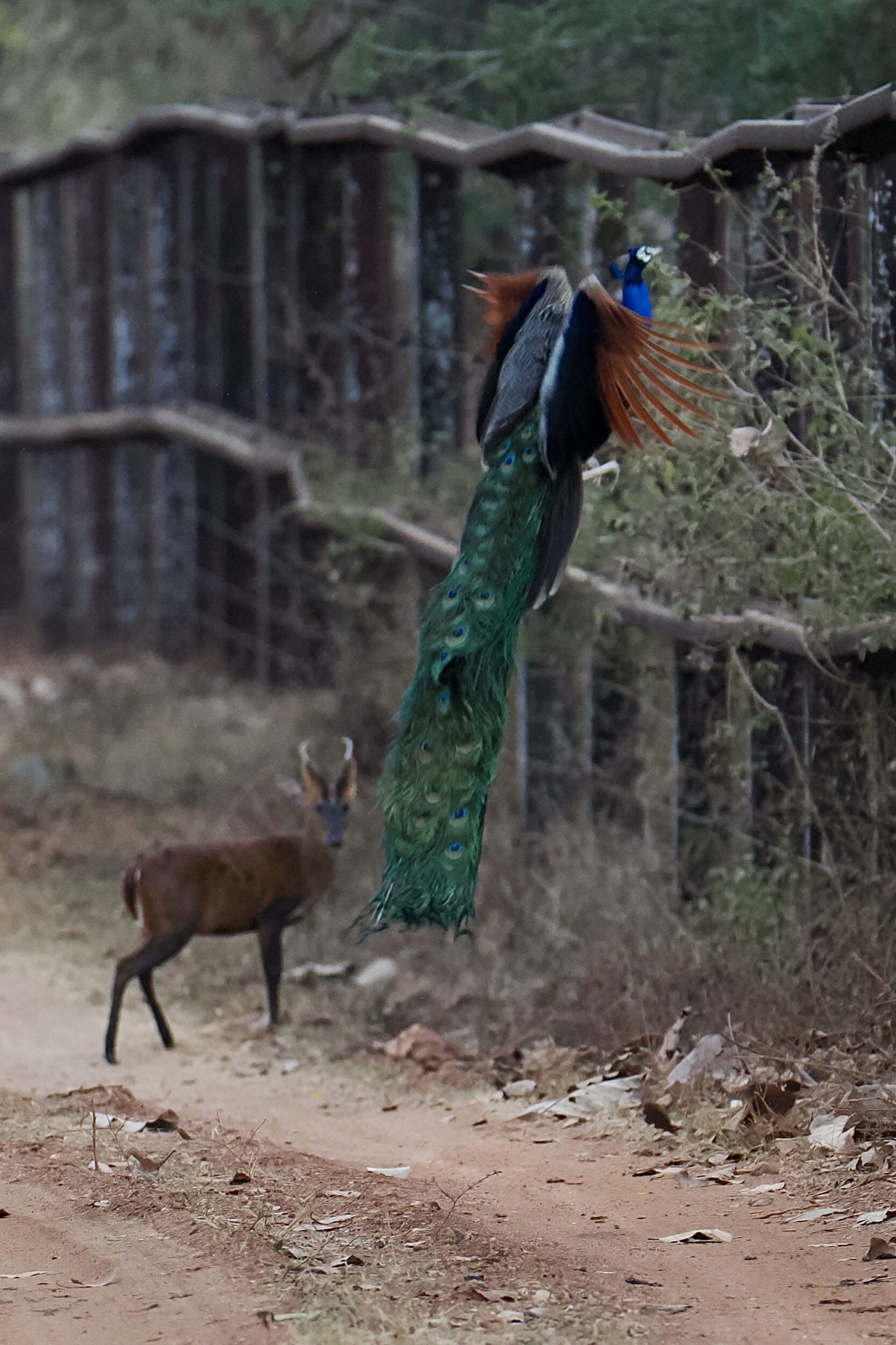Just one week ago we were enjoying our final early morning safari in Karnataka’s Nagarhole Tiger Reserve, before a long drive to Bengalaru (formerly Bangalore) and our longer-again, two-flights journey home.
To an Australian visitor, what you can see above is an utterly amazing, very “exotic” sight.
To a local person who is very familiar with this national park, it is a perfectly ordinary circumstance.
Such an “amazing”/“commonplace” duality is a tag that applies to a great many things in India…and Australia too.
(try to imagine how “utterly unlikely” an emu, a galah, a kangaroo, or a blooming kangaroo paw must look to someone who has never before encountered any of them)
Photo is copyright Doug Spencer, taken at 6.37 am on Wednesday 08 March 2023, just inside the fence that separates Nagarhole Tiger Reserve from adjacent farmland.
We saw literally hundreds of peacocks along this particular track; the local peacocks (common, wild animals here) relish the winning combination of “protected, suitable forest habitat” inside the national park and “easy-raiding access to the crop land on the other side of the fence”.
Much less commonly/easily sighted is the pictured mammal; barking deer (aka “muntjac”) are very small, very shy.
As a future post will explain, barking deer are also very ancient, and are the current subject of much scientific curiosity, research, debate, and re-evaluation.
Probably, the pictured species or sub-species has the lowest recorded number of chromosomes of any mammal – a lower count than a fruit fly’s!
